
What Is Blue Light?
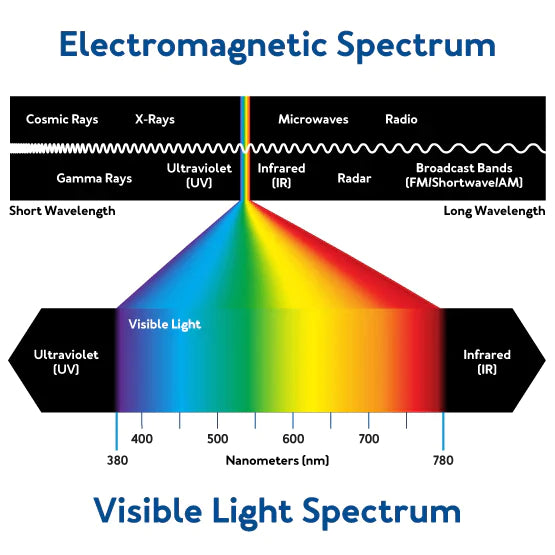
Light is a fascinating phenomenon that is composed of tiny particles known as photons. These particles travel through space in the form of waves, with each wave having a unique length and strength.
The spectrum of light ranges from short and powerful to long and weak, and the distance between the peaks of these waves is known as the wavelength.
Wavelengths of light are measured in nanometres (nm), and they vary greatly, from the visible spectrum of colors like red, orange, yellow, green, blue, and violet, to the invisible spectrum of infrared and ultraviolet light.
Each wavelength of light has its own unique properties and applications,
Blue light is a type of light with a wavelength range between 400-495 nanometers, which is part of the visible light spectrum.

Retina Damage
Blue light, specifically in the range of 400-450 nanometers, is a powerful and concentrated wavelength. Its ability to deeply penetrate the retina in the eye can cause damage over time, such as macular degeneration, which can lead to vision loss.

Sleep Health
Blue and green light with wavelengths between 450-550 nanometers have a significant impact on the brain's ability to produce melatonin, a crucial hormone for regulating sleep and promoting overall health and wellbeing.
Blue Light And Melatonin
Blue Light And Melatonin
Melatonin, the "sleep hormone," regulates sleep and wakefulness, produced by the pineal gland in the brain.
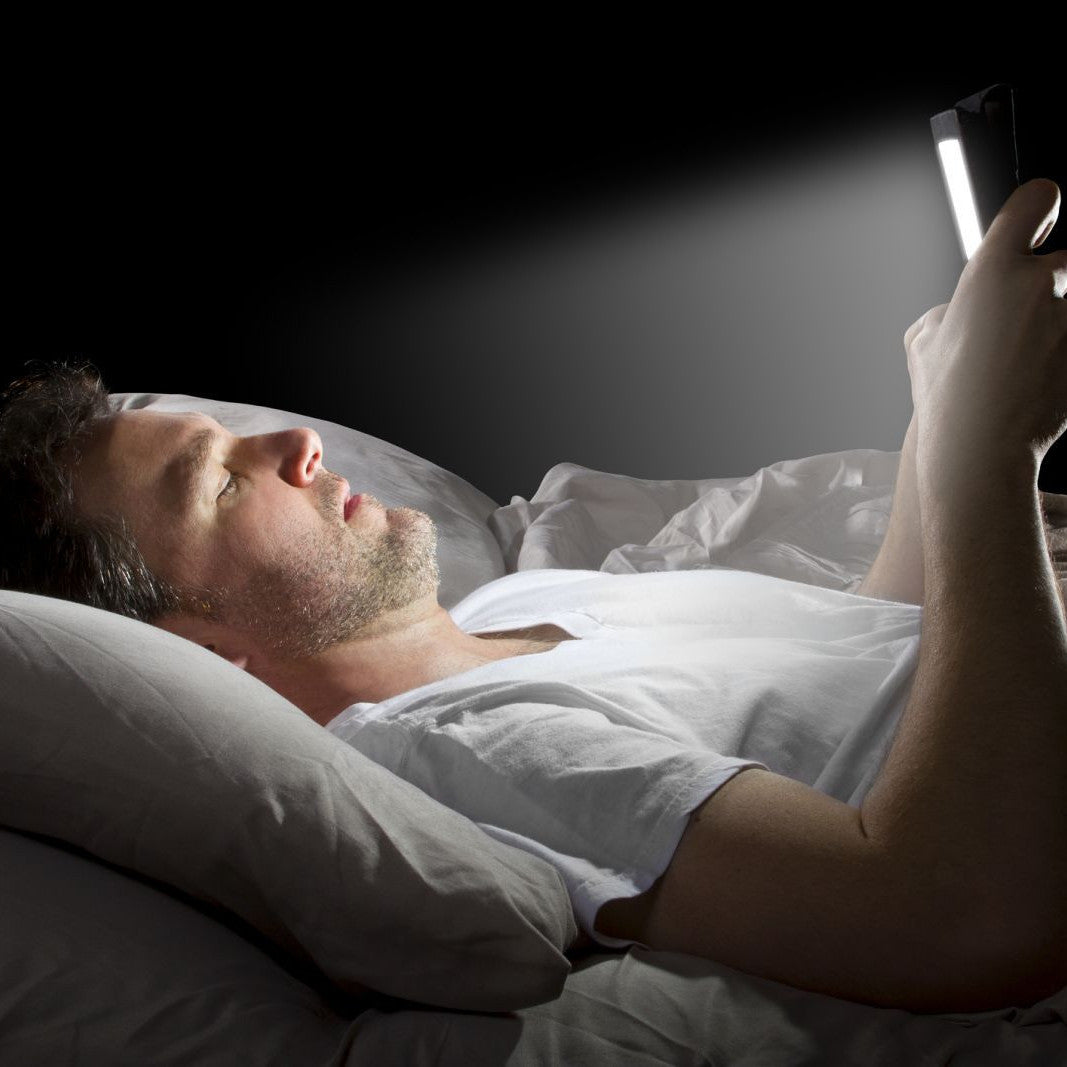
As the sun sets and the day comes to an end, the body's natural sleep-wake cycle begins to shift. The brain receives a signal to start secreting melatonin, a hormone that plays a vital role in regulating sleep and wakefulness.
Melatonin is responsible for causing feelings of sleepiness and eventually sends us into a deep and restful sleep. However, exposure to artificial blue light at night can completely disrupt this elegant process of priming our body for sleep.
Blue light at night is known to suppress the production of melatonin, this is because the signals it sends to the brain tricks it into thinking it's still daytime, regardless of the actual time. This causes the brain to respond by making us feel more awake and alert, making it hard to fall asleep.
Blue light In The Modern World
Blue Light In The Modern World

In today's world, we are constantly bombarded with blue light from all directions. We carry artificial suns in our pockets in the form of smartphones, tablets, and laptops.
Every time we look at our screens, or turn on lights, we send a signal to the brain that the sun is still up. In modern society, once the sun goes down, we watch our favorite TV shows, scroll through social media on our smartphones, and turn on the lights in our homes, all of which produce very high amounts of artificial blue light.
This chronic exposure to blue light, even if it's only low blue light, at night is suppressing melatonin production and robbing us of precious sleep.
Blue light exposure at night is impacting our circadian rhythm, sleep, and overall health.
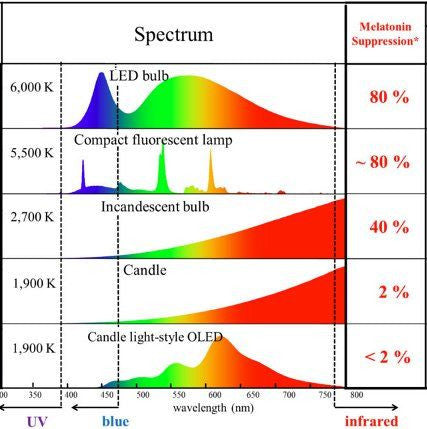
The image provided illustrates the difference in the levels of blue light emitted by various light bulbs and the impact it has on melatonin production, making it clear that some sources of light emit more blue light than others.
Different types of light bulbs emit different levels of blue light, and thus, have varying effects on melatonin production. Incandescent bulbs, for example, emit very little blue light and are considered much less disruptive to melatonin production. On the other hand, LED and CFL bulbs emit significantly more blue light and are known to suppress melatonin production more heavily.
Candles, on the other hand, emit minimal amounts of blue light and are considered a good option for low-blue light source, especially in the evening and at night.
Blue Light In Nature
Blue Light in Nature
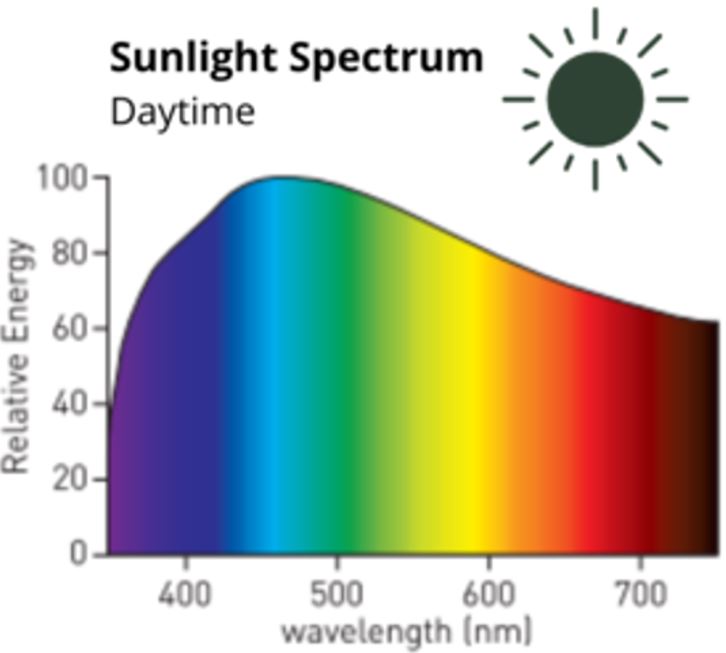
Natural blue light, which is a component of daylight, differs from artificial blue light in that it is accompanied by a balance of other wavelengths. This includes a proportionate amount of infrared, red, yellow, orange, and UV wavelengths, known as a full spectrum light.
The balance of these different colors also varies throughout the day. For example, in the morning, there is less blue light and more red and infrared, while at midday, there is more blue light and UV. As sunset approaches, the balance shifts again to higher amounts of red and infrared.
This natural balance of different wavelengths, including blue light, helps to regulate our circadian rhythm, promoting healthy sleep and overall well-being.
Not all blue light is bad for us. Blue light can be found both in nature (from the sun) and artificially (from LED lights, and digital devices)
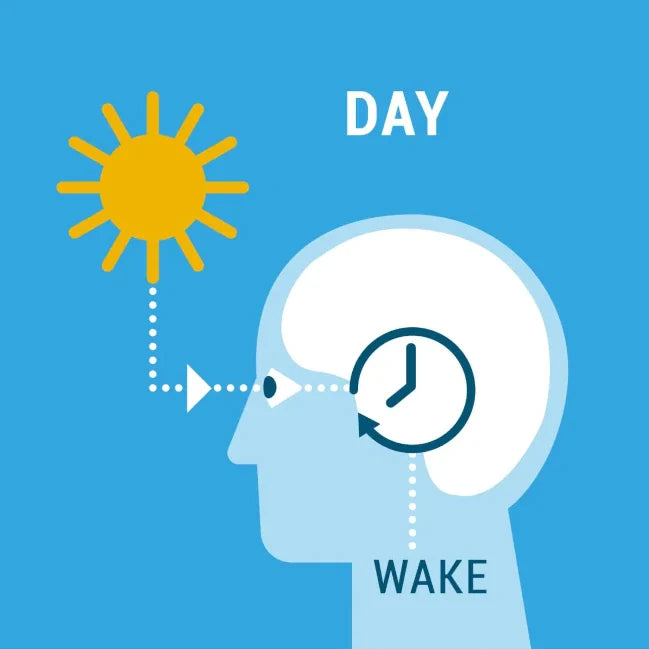
Natural blue light from the sun has been shown to have a positive impact on alertness, mood, and motivation. It is essential for maintaining overall health and well-being. The presence of blue light plays a crucial role in regulating our circadian rhythms.
In the morning, when natural blue light enters our eyes, it sends a signal to the brain that the day has started, and it's time to feel awake, alert, and energized. This natural regulation of our body clocks is necessary for maintaining a healthy sleep-wake cycle.
Additionally, blue light exposure has been linked to an increase in the production of neurotransmitters such as dopamine and serotonin. These chemicals are responsible for regulating mood, emotions, and overall well-being.
Getting healthy doses of blue light from the sun is essential to setting your circadian rhythm and regulating your sleep and wake cycles.
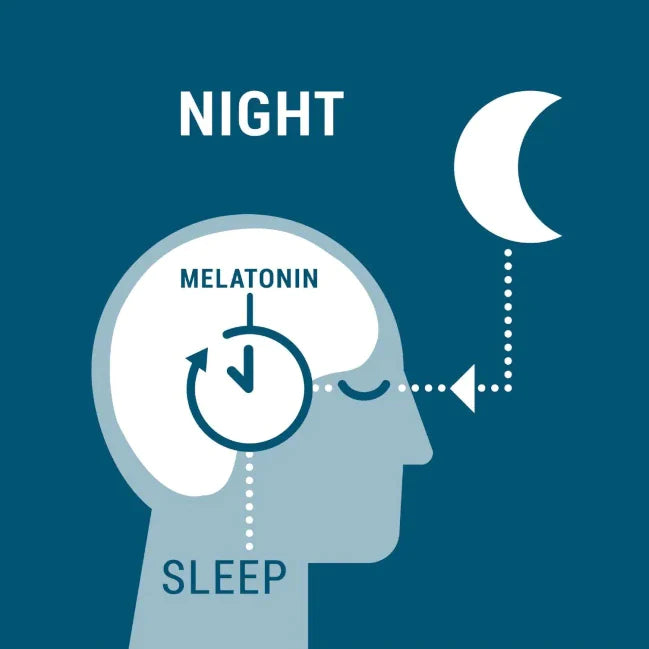
As the sun sets and darkness envelops us, the absence of blue and green light in our environment sends a signal to our brain that it's time to shift into a more relaxed state. The brain responds by releasing melatonin, a hormone that plays a crucial role in regulating our sleep-wake cycle.
The release of melatonin causes us to feel more relaxed and drowsy, preparing us for a deep and restful sleep. Melatonin is key for regulating our internal body clock, which is essential for maintaining healthy sleep patterns and overall well-being.
Our bodies are hardwired to respond to the natural cycles of light and dark, and the absence of blue and green light in the evening is a key signal for our body to prepare for sleep.
How To Optimise Your Light Environment
How To Optimise Your Light Environment

Get Outside in the Morning
Get unfiltered natural sunlight upon waking in the morning. This is important for regulating the body's circadian rhythm and clock. It helps to suppress the release of melatonin, allowing the body to produce more in the evening and promote better sleep quality. Additionally, natural sunlight exposure in the morning can help boost energy levels and improve mood, making it an essential part of a healthy daily routine.
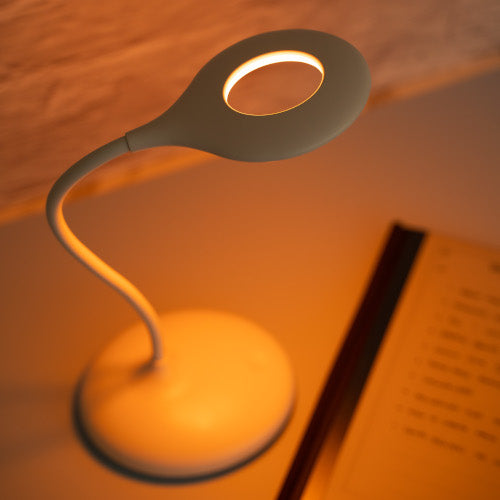
Use Blue Light Free Lighting
Reduce artificial blue light sources by replacing conventional light bulbs in your house that are high in blue light with scientifically-designed Sleep Enhancing Bulbs and Red Nightlights to remove all the blue light from your home. This is extremely important as our skin also has light-signalling receptors that are also impacted by artificial light.

Wear Blue Blocking Glasses at Night
Wear blue light blocking glasses at night. These glasses have been scientifically designed to block 100% of the blue light spectrum from screens, LED lighting, and all other artificial light sources. By doing so, it allows for the maximum release of melatonin which is essential for restful sleep and helps the body to restore, recover, and heal during the night.

Wear Computer Glasses During The Day
Protect your eyes during the day by using computer glasses specifically designed to filter out harmful blue light emitted by screens and artificial light sources. This can help alleviate digital eye strain, headaches, and blurred vision caused by prolonged screen time and exposure to bright lighting.

